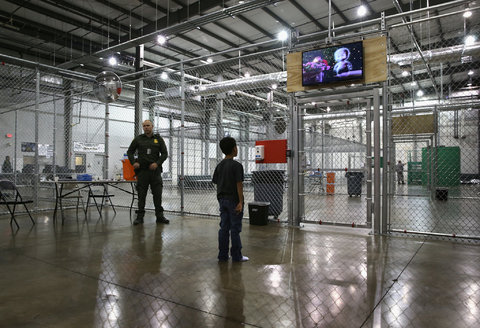This introductory week has opened my eyes to the importance of media literacy within the classroom. Though a large portion of the reading was related to digital literacy as well, I feel that this is something many educators are already focusing on integrating. I’ve been working on digital literacy along with digital citizenship with my fifth graders as they need to be responsible and conscientious participants in digital communities if they’re going to engage with technology in education. Because of this, I want to focus specifically on media literacy during this post.
What initially jumped out to me was information from Edutopia’s Common Core in Action post by Todd Finley. The Common Core State Standards (CCSS) were cited in relation to media literacy standards. However, I noticed that the first mention of media literacy in the CCSS was not until middle school. It’s interesting as an elementary school teacher to think that there are no official expectations for media literacy at my students’ age. However, students are constantly saturated by media. If we don’t teach them the skills to analyze media critically, they will be less able to identify when they may be a victim of propaganda or emotional manipulation.
Media Smarts focused on the difference between digital enjoyment and enthusiasm as opposed to digital literacy. I believe this goes hand-in-hand with media literacy as well. Students are constantly exposed to media and they thoroughly enjoy most of it. Why should we make the assumption that it isn’t important to teach them how to critically view and analyze media?
This caused me to think about my own teaching practices and how to integrate media literacy into a fifth grade classroom, regardless of CCSS requirements. This is where I found the New York Times article about utilizing intriguing photographs to support media literacy to be so incredibly helpful.
When reading this article I found myself already planning how I can integrate these images into my own instruction and I realized how much my fifth grade team and I are already asking many of these questions with our students. Through the use of accountable talk in literacy, number talks in math, and notice and wonder activities in science, our students are consistently using observations to create inferences. However, fifth graders often struggle to understand the importance of supporting inferences with evidence.
What I learned from the New York Times article was that I can use media and images to allow my students to actively analyze and interpret media while practicing supporting their inferences with evidence. This takes a fundamental academic skill and integrates it with media literacy education in an authentic and engaging manner. I’m excited to try this strategy tomorrow morning with my students and see if we can begin to slowly turn media literacy discussions into a weekly routine.

John Moore/Getty Images – New York Times
Though there is so much to be learned and gained from the readings this week, and though there are so many different approaches I can take to engaging my students in media literacy instruction, I am at least beginning the first steps in this journey. I am excited to see what next steps my students and I can take after this!
I’d love to hear what you students do with work like this. Did you see the exercise your classmate did at home with some of those images?
We’ll have some more readings later on younger kids’ media and the commercialism woven through much of it. In the meantime though, yes — looking closely and critically at media is great for any age.
LikeLike
I also wanted to be sure you saw this at the bottom of our syllabus page — image analysis pitched for slightly younger kids.
http://www.discovermedialiteracy.com/ideas/interpreting-creating-photos
LikeLike
This is a great resource! I didn’t see it initially but I’m absolutely going to utilize it. I think I’ll continue using the pictures and prompts from the initial resource (NY Times) for a while to get them used to analyzing media. Then I can begin to switch to the questions asked in this prompt. That will be a great transition from focusing on detail in images to critically analyzing their purpose. Thank you for sharing this!
LikeLiked by 1 person
Please please tell me how it goes 🙂
LikeLiked by 1 person